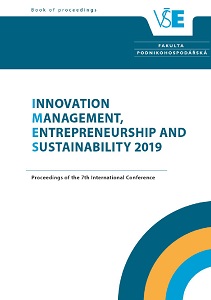Regulatory Conditions for Peer-To-Peer
Lending for Small and Medium Businesses
Regulatory Conditions for Peer-To-Peer
Lending for Small and Medium Businesses
Author(s): Augustinus (Stijn) van der Krogt, Cecilia M. T. López Badano
Subject(s): Social Sciences, Economy
Published by: Vysoká škola ekonomická v Praze
Keywords: Peer-to-peer lending; crowdlending; marketplace lending; fintech; small and medium business
Summary/Abstract: Purpose: This research analyses the importance of the collective financing model known asPeer-to-Peer Lending for Business (PPL-B) for small and medium-sized companies (SMEs). Inparticular it evaluates the impact of the national regulatory framework and the use of alternativecredit risk assessment models applied by PPL-B on the credit access for SMEs.
Design/Methodology: This research is based on a multiple case-study and the analysis ofsecondary information resources including 11 academics articles and 7 international researchreports on the topic. The research scope is limited to a 5-year period (2013-2018) and looks atfour referential countries in this sector including the United States, United Kingdom, China andGermany.
Findings: PPL-B has become an important alternative source of financing for SMEs in theUSA, UK and China. It furthermore suggests that the country-specific regulatory frameworkapplied to PPL-B has an important impact on its growth and access to it for SMEs in thesecountries. Also, that the use of alternative data sources as applied by PPL-B platforms hasa positive effect on the credit approval rates in the USA and China.
Research/practical implications: The paper has direct implications for policymakers who canlearn that SMEs can benefit from PPL-B if governments set up regulatory frameworks cateredspecifically for this sector. The paper informs investors and SMEs that the use of alternativedata sources contributes to higher credit approval rates for SMEs. This research has severallimitations due to the lack of data on the PPL-B sector and its impact on SMEs. To addressthese challenges, future research is to focus on in-depth country-specific studies that compareSMEs’ credit access through traditional banking institutions and PPL-B platforms.
Originality/value: This research responds to current lack of multiple-country studies thatanalyse the key factors to effective credit access for SMEs through PPL-B.
- Page Range: 992-1003
- Page Count: 12
- Publication Year: 2019
- Language: English
- Content File-PDF

